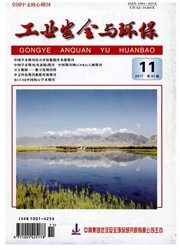

 中文摘要:
中文摘要:
采用Tessier法与Wenzel法研究攀枝花地区不同种样品中重金属锰(Mn )的含量及形态分布差异,分析不同样品Mn的生物有效性及两种方法各形态Mn含量的相关性。结果表明,Mn全量顺序为公路灰尘>钒钛磁铁矿矿石>钒钛磁铁矿尾矿>水稻土>紫色土。两种方法测得样品中Mn均以残渣态为主;残渣态Mn含量占全量百分比顺序为供试矿物样品>灰尘样品>土壤样品。结合各形态Mn迁移性及生物可给性分析样品中锰的生物有效性顺序为:供试紫色土>水稻土>道路灰尘>钒钛磁铁矿矿石>钒钛磁铁矿尾矿。
 英文摘要:
英文摘要:
This paper studies the differences of Mn fractionations in soil ,dust and mineral by Tessier’s method and Wen-zel’s method .The biological effectiveness of different sampled Mn is analyzed ,as well as the positive correlations of some fractionations of the two methods .The total content of Mn in five tested samples follows :road dust〉vanadium titanium mag-netite ore〉vanadium titanium magnetite tailing 〉 paddy soil〉purple soil .The main form of Mn in all samples tested by both methods shows residual and the proportion of residual Mn to total Mn follows :mineral samples〉 dust samples〉 soil samples .Based on the mobility and bioaccessiblity of Mn in each fractionation ,it indicates that the bioavailability of Mn is highest in soil samples ,followed by dust samples and with the lowest in mineral samples .
 同期刊论文项目
同期刊论文项目
 同项目期刊论文
同项目期刊论文
 Speciation of vanadium in Chinese cabbage (Brassica rapa L.) and soils in response to different leve
Speciation of vanadium in Chinese cabbage (Brassica rapa L.) and soils in response to different leve In Vitro Health Risk Assessment of Ingesting Metal-enriched Soils and Dusts in a Chinese Mining City
In Vitro Health Risk Assessment of Ingesting Metal-enriched Soils and Dusts in a Chinese Mining City 期刊信息
期刊信息
